Trees are among the most awe-inspiring wonders of nature, standing as silent sentinels of time and history. From towering giants that pierce the skies to ancient beings that have witnessed the rise and fall of civilizations, these majestic trees command respect and admiration. Each tree tells a story, not just of its own life but of the environment it supports and the cultures it has touched. In this article, we explore the top 14 most majestic trees that tower over forest canopies across the globe. These trees are remarkable not only for their size and age but also for the vital roles they play in their ecosystems and the unique beauty they bring to the natural world. Join us as we journey through forests, deserts, and sacred groves to discover these towering wonders that stand as symbols of nature’s grandeur.
Methuselah Tree, California, USA
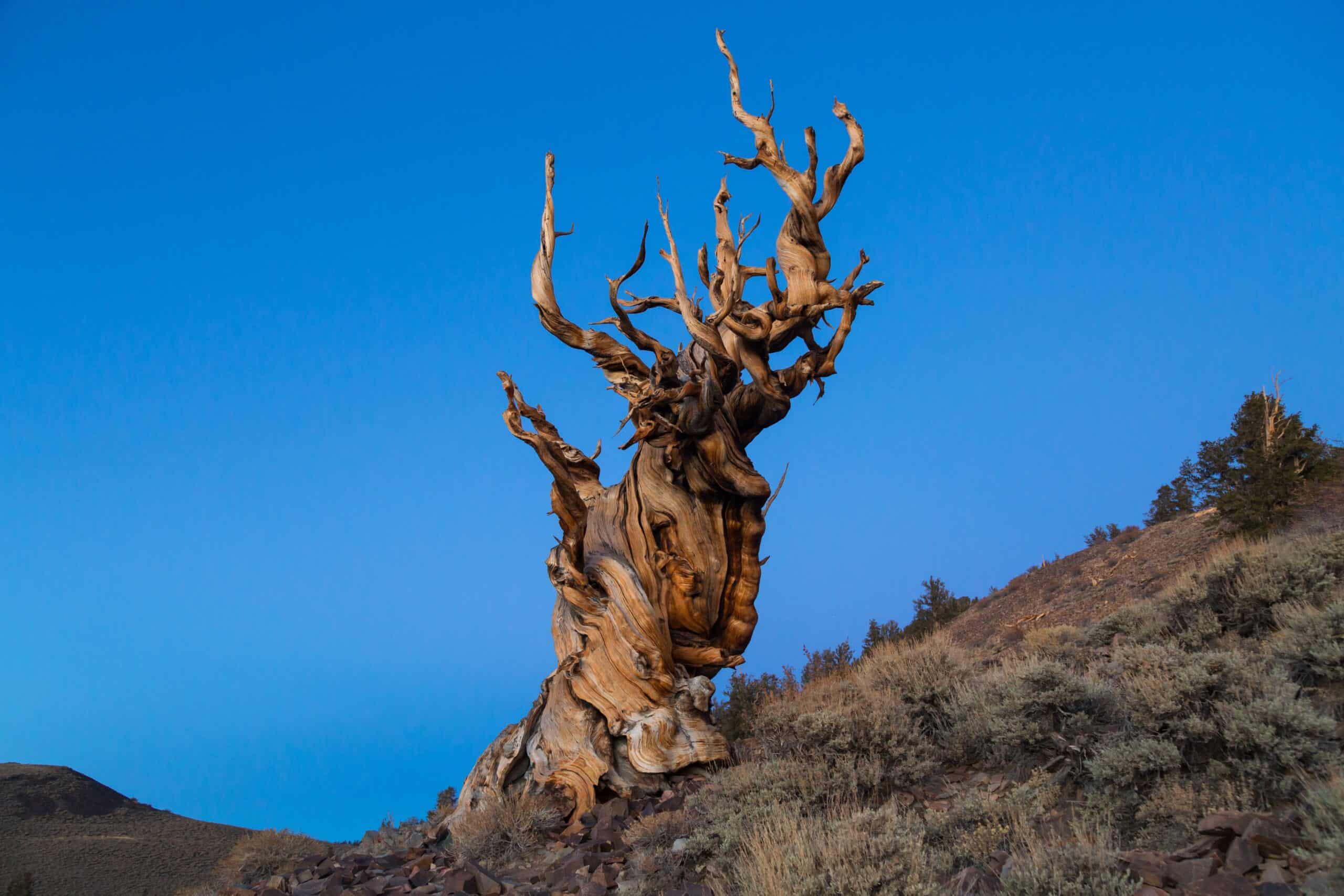
The Methuselah Tree, a Great Basin bristlecone pine (Pinus longaeva), stands as a testament to time and endurance, with an astonishing age of over 4,800 years. Nestled in the arid, high-altitude White Mountains of California, its exact location remains a closely guarded secret to protect it from harm. Methuselah’s remarkable longevity is due to several unique adaptations that allow it to thrive in harsh, nutrient-poor soils where few other trees can survive. Its wood is dense and resinous, making it resistant to rot and insect damage, while its ability to lose up to 90% of its bark without perishing is a survival mechanism that has allowed it to weather millennia of environmental changes. Methuselah’s twisted, ancient form rises above the stunted, windswept landscape, a living relic of a world long past. Its survival through countless epochs, witnessing civilizations rise and fall, makes it not just a tree but a living monument to the resilience of nature. The Methuselah Tree’s majestic presence and its incredible story of survival make it one of the most revered and awe-inspiring trees on the planet.
Cypress of Abarqu, Iran
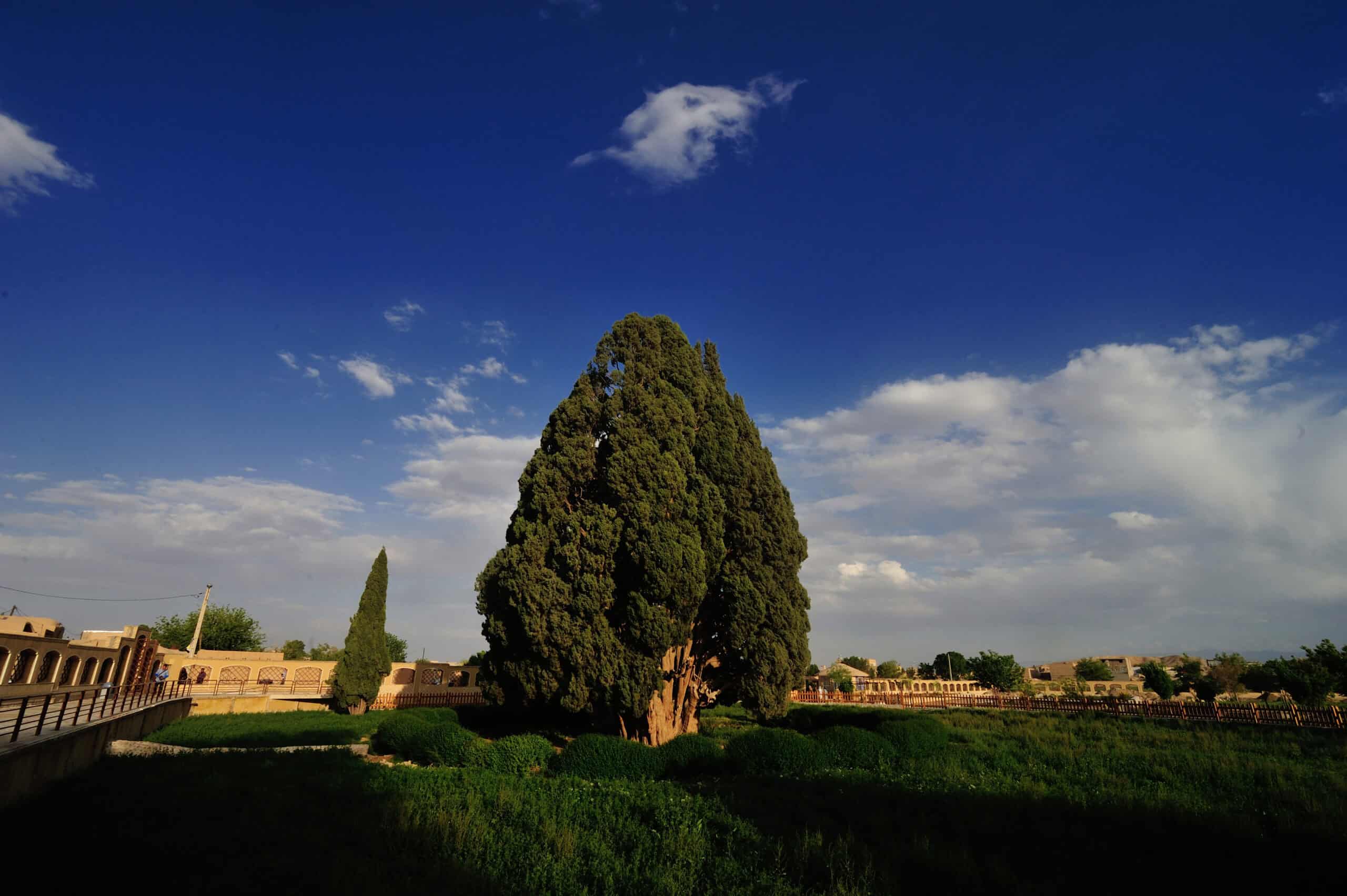
The Cypress of Abarqu, also known as Sarv-e Abarqu, is a towering symbol of endurance and reverence in Iranian culture. Estimated to be between 4,000 and 5,000 years old, this ancient tree is one of the oldest living things in Asia and a living testament to the rich history of the region. The tree is located in the city of Abarkuh, in the Yazd Province of Iran, and has become a celebrated part of the local heritage. Standing over 82 feet tall, the Cypress of Abarqu is more than just a botanical wonder; it is deeply entwined with the myths and legends of the area. According to local lore, the tree was planted by the ancient prophet Zoroaster, adding a layer of spiritual significance to its already impressive stature. The cypress has been a symbol of life, resilience, and beauty in Iranian culture for millennia, appearing in ancient poetry and art. Its majestic form, rising above the arid landscape, and its association with the divine, make the Cypress of Abarqu not only a natural wonder but a cultural treasure that continues to inspire awe and respect.
Hyperion, California, USA
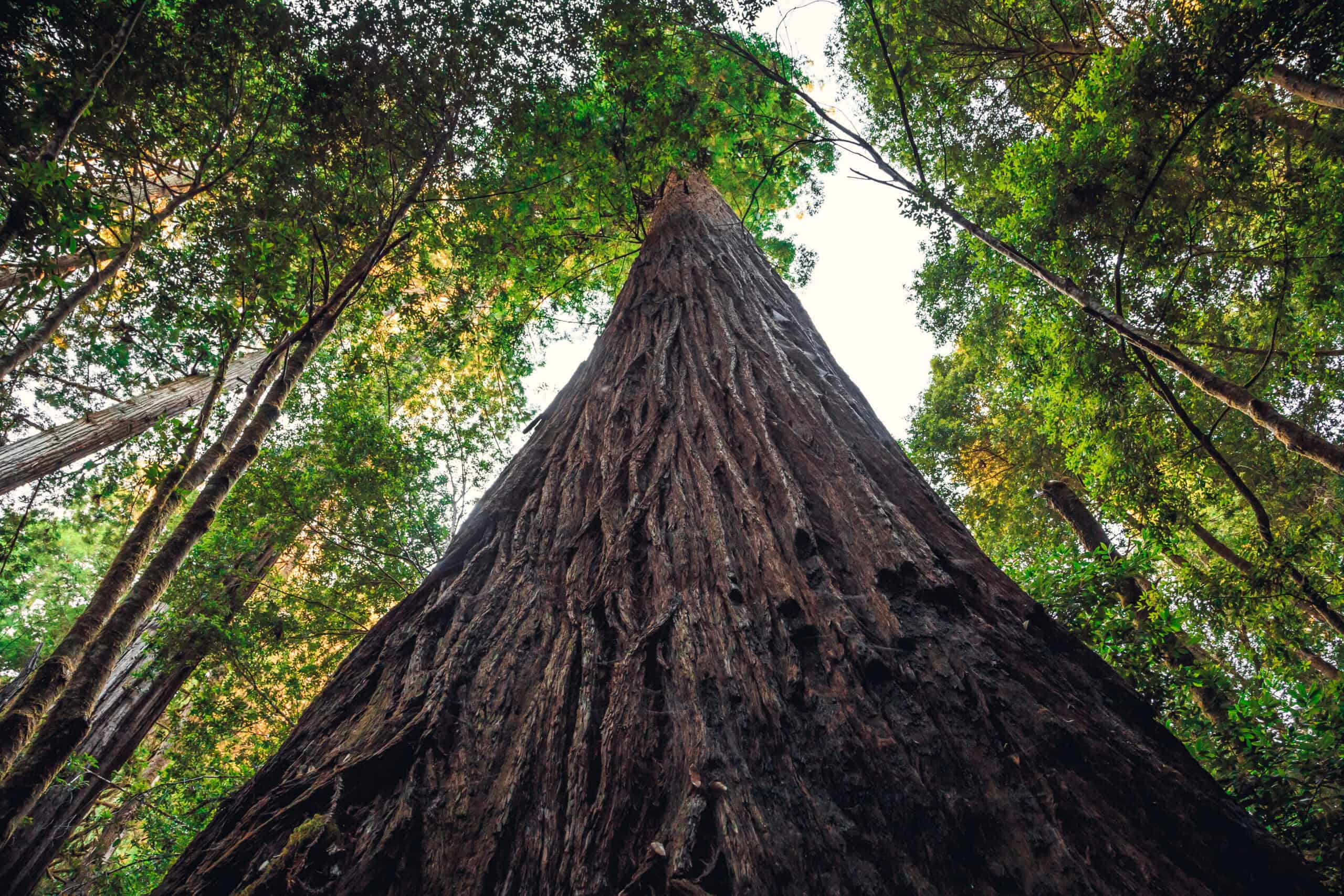
Hyperion, a coastal redwood (Sequoia sempervirens), holds the title of the world’s tallest tree, reaching an astounding height of 379.1 feet. Located in a remote part of Redwood National Park in California, Hyperion was discovered in 2006 by naturalists Chris Atkins and Michael Taylor. The tree’s incredible height is a testament to the resilience and vitality of the coastal redwood species, which are among the tallest and oldest trees on the planet. Coastal redwoods thrive in the foggy, temperate climate of Northern California, where the combination of ample rainfall and nutrient-rich soil provides the ideal conditions for these giants to reach such impressive heights. Hyperion’s exact location is kept secret to protect it from damage by tourists, as previous high-profile trees have suffered from trampling and vandalism. The tree’s survival is also a reminder of the fragility of old-growth forests, which have been significantly reduced by logging. Standing in the shadow of Hyperion, one can’t help but feel dwarfed by its grandeur, a living link to the ancient forests that once covered much of the Earth.
Menara, Borneo, Malaysia
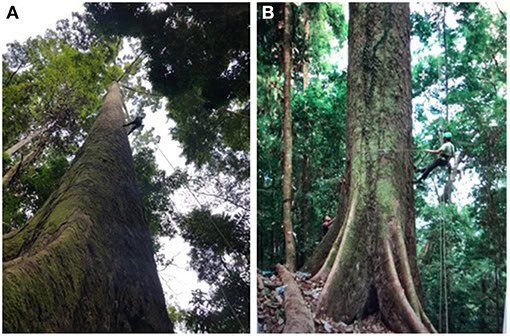
Menara, a yellow meranti tree (Shorea faguetiana), is the tallest tree in Asia, soaring to a height of 331 feet. Found in the Danum Valley Conservation Area in Sabah, on the island of Borneo, Menara stands as a beacon of the region’s rich biodiversity. The tree’s name, which means “tower” in Malay, reflects its towering presence above the dense rainforest canopy. The yellow meranti species is known for its straight, columnar trunks and the ability to reach incredible heights, making Menara an impressive example of nature’s architecture. However, the species is critically endangered due to deforestation and illegal logging, which threaten not only the trees but the unique ecosystem they support. The Danum Valley, where Menara resides, is one of the last strongholds of untouched rainforest in Borneo and is home to an incredible array of wildlife, including endangered species like the orangutan, clouded leopard, and Bornean pygmy elephant. Menara’s majestic height and its role in supporting such a diverse ecosystem make it a symbol of both the beauty and vulnerability of the world’s tropical rainforests.
Centurion, Tasmania, Australia
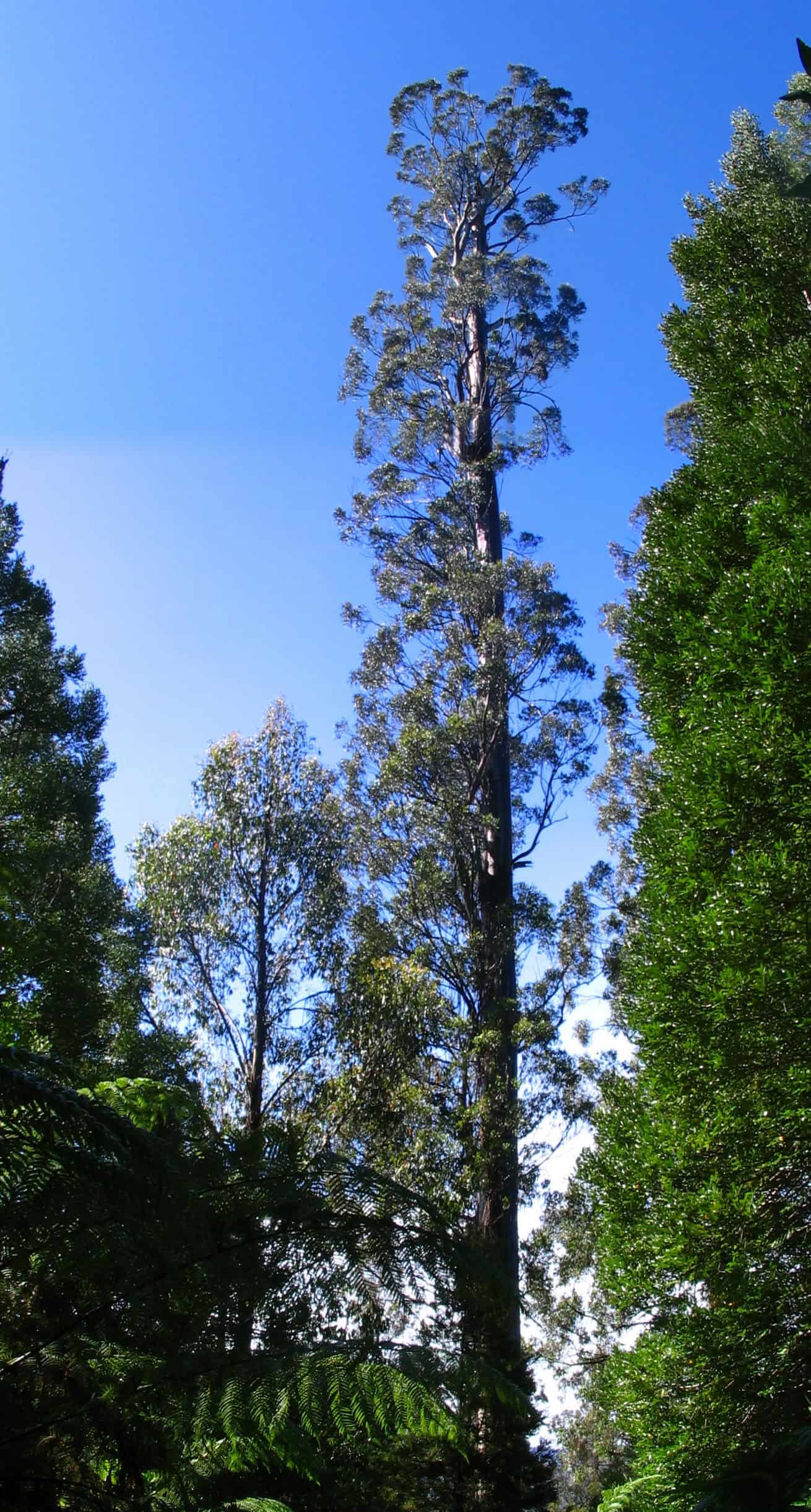
Centurion is the tallest known eucalyptus tree in the world, a mountain ash (Eucalyptus regnans) that reaches a height of 330 feet. Located in the Arve Valley of Tasmania, Australia, Centurion is an extraordinary example of the resilience and grandeur of the eucalyptus species. The tree was named after being the 100th “tall tree” registered by Forestry Tasmania. Mountain ash trees are known for their rapid growth and towering heights, making them some of the tallest flowering plants in the world. Centurion has survived numerous threats, including a devastating bushfire in 2019 that scorched much of the surrounding forest but left Centurion standing, though slightly singed. The tree’s survival is a testament to the strength of eucalyptus trees, which have evolved thick, fire-resistant bark that helps them withstand wildfires. Centurion’s size and survival story make it a symbol of resilience in the face of adversity, and a majestic representative of Australia’s unique natural heritage. As it continues to grow, Centurion remains a living monument to the power and beauty of the natural world.
General Sherman, California, USA
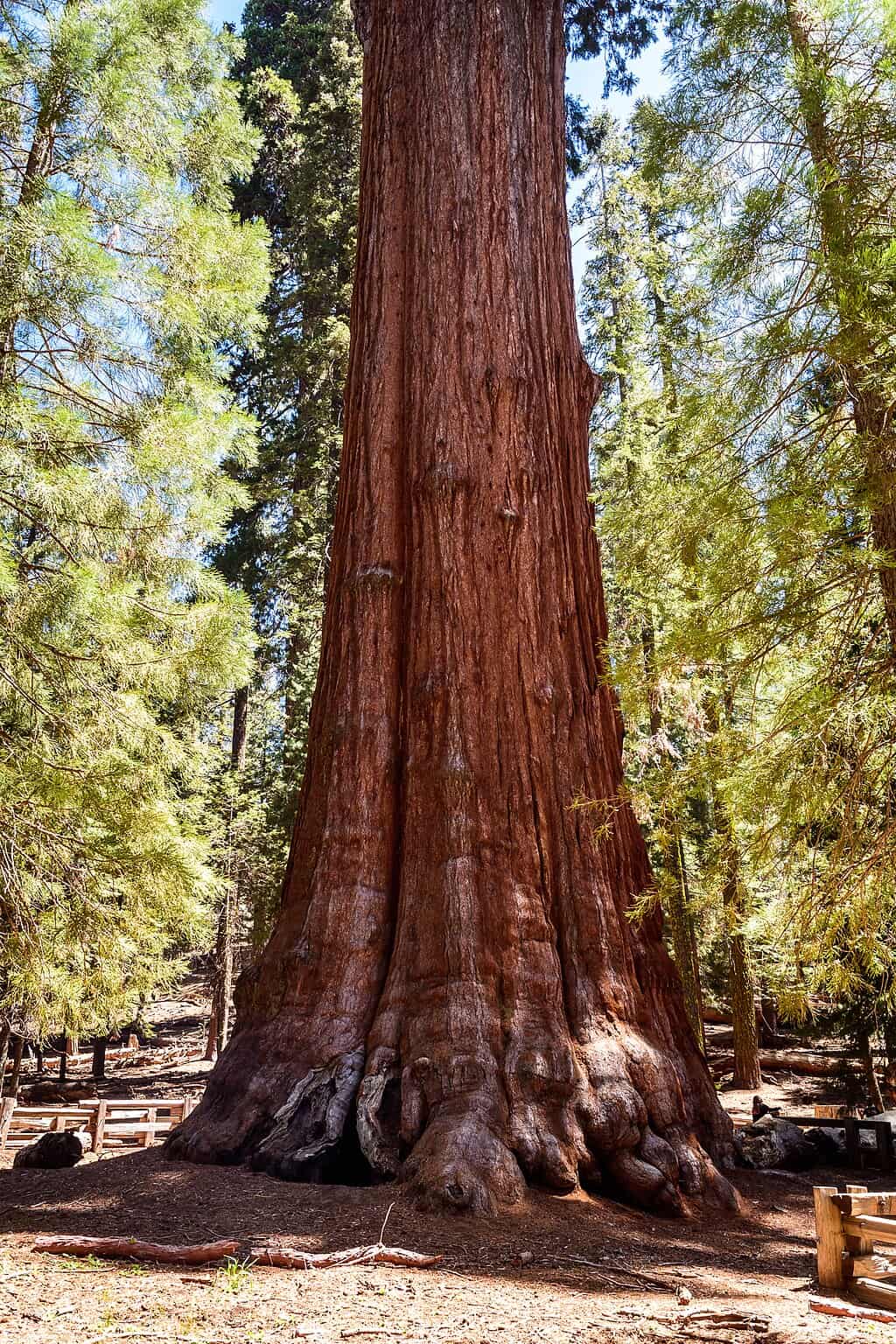
General Sherman is not only the largest tree in the world by volume but also one of the most iconic natural wonders in the United States. This giant sequoia (Sequoiadendron giganteum) resides in Sequoia National Park in California and measures an astonishing 52,500 cubic feet in volume. Standing at 275 feet tall and over 36 feet in diameter at its base, General Sherman’s massive size is the result of a unique combination of height, width, and age. The tree is estimated to be around 2,200 years old, making it a living relic of ancient times. Some of its branches are larger than entire trees found in other parts of the world. Despite its colossal size, General Sherman continues to grow, adding more wood each year than any other tree on the planet. The giant sequoias are among the most long-lived and resilient trees, capable of withstanding fires, pests, and even droughts. General Sherman’s imposing presence and historical significance make it a must-see for anyone visiting California’s national parks, a true testament to the power and majesty of nature.
Árbol Del Tule, Mexico
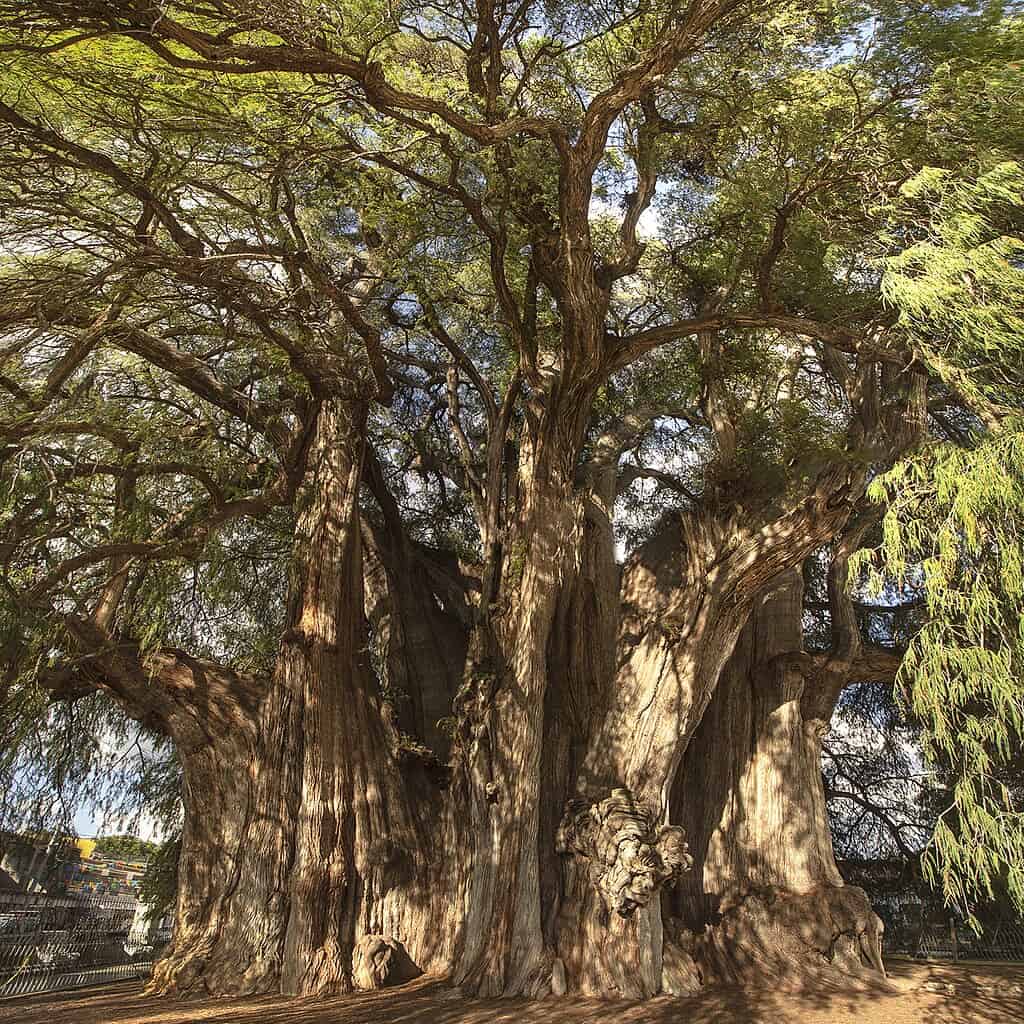
Árbol del Tule, located in the town of Santa María del Tule in Oaxaca, Mexico, is renowned for having the stoutest trunk of any tree in the world. This Montezuma cypress (Taxodium mucronatum) boasts a trunk with a diameter of 30.8 feet and a circumference of over 137 feet. The tree is not exceptionally tall, standing at 116 feet, but its massive trunk gives it a unique and awe-inspiring presence. Árbol del Tule is estimated to be around 1,400 to 1,600 years old, making it not only one of the largest trees by girth but also one of the oldest in Mexico. The tree’s thick, gnarled trunk is said to resemble the figures of animals, faces, and other shapes, which have been a source of fascination and folklore for generations. Local Mixe people believe that the tree grew from the walking stick of a God, adding a layer of spiritual significance to its physical majesty. Árbol del Tule is a national treasure in Mexico, drawing visitors from around the world who come to marvel at its incredible size and the legends that surround it.
Thimmamma Marrimanu, India
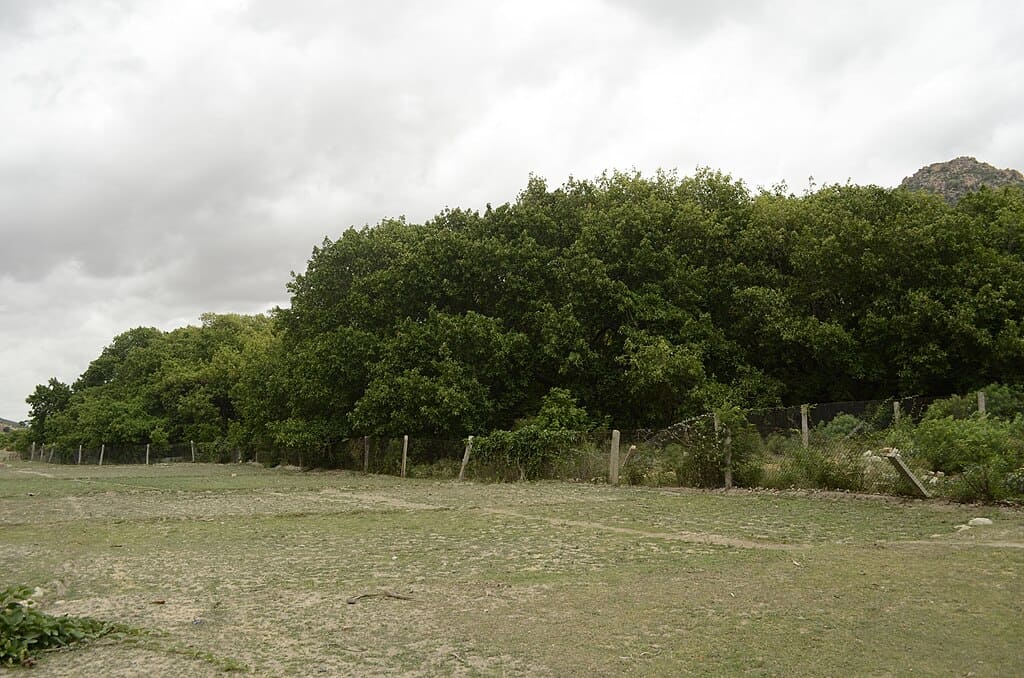
Thimmamma Marrimanu is a banyan tree (Ficus benghalensis) located in the Anantapur district of Andhra Pradesh, India, and is recognized as having the largest canopy spread of any tree in the world. Covering over 4.7 acres, the tree’s vast network of aerial roots creates a dense and sprawling canopy that provides shelter and shade to a large area. According to local legend, the tree is named after Thimmamma, a devoted wife who committed sati (a now-outlawed practice where a widow immolates herself on her husband’s funeral pyre). It is believed that the tree grew from the site of her sacrifice, and as such, it is revered as a sacred site by locals. The tree’s incredible spread is supported by its many prop roots, which descend from the branches and take root in the soil, allowing the tree to cover such a large area. Thimmamma Marrimanu is not only a natural wonder but also a place of pilgrimage, where people come to pay their respects and seek blessings. The tree’s sheer size and cultural significance make it one of the most majestic and revered trees in the world.
Kapok Tree, Amazon Rainforest
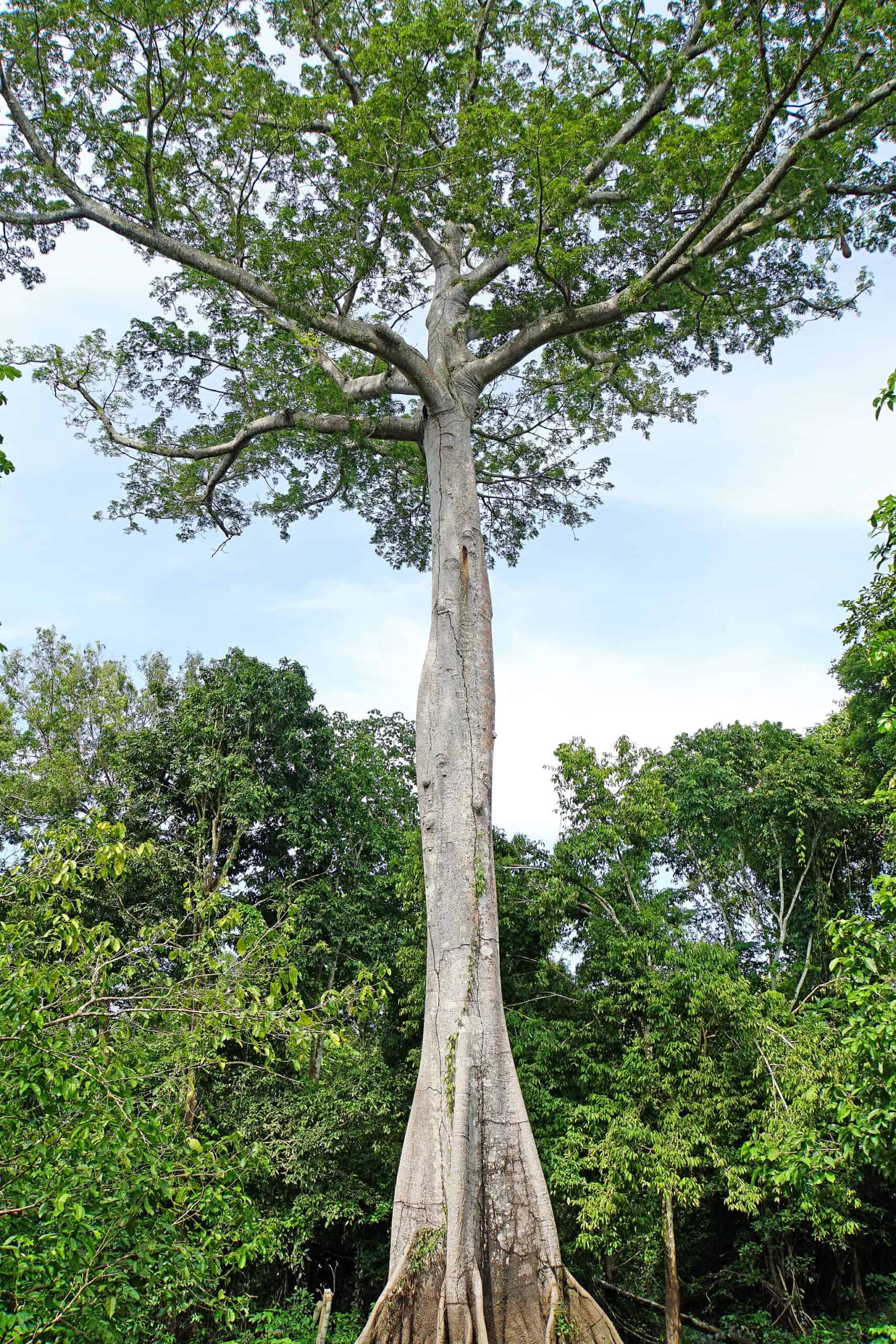
The Kapok tree (Ceiba pentandra) is one of the towering giants of the Amazon Rainforest, known for its impressive height and cultural significance. Reaching up to 230 feet tall, the Kapok tree is one of the largest trees in the tropical rainforest, with a trunk that can grow up to 10 feet in diameter. The tree’s massive buttress roots, which extend above the ground, provide stability in the often shallow and nutrient-poor soils of the rainforest. The Kapok tree plays a crucial role in the ecosystem, providing habitat and food for a variety of species, including birds, insects, and mammals. Its canopy supports a diverse community of epiphytes, such as orchids and bromeliads, which add to the rich biodiversity of the rainforest. The tree is also culturally significant to many indigenous communities in the Amazon, who regard it as sacred and believe it to be the home of spirits. The Kapok tree’s towering presence, ecological importance, and spiritual significance make it one of the most majestic trees in the world, embodying the grandeur and mystery of the tropical rainforest.
Socotra Dragon Tree, Yemen
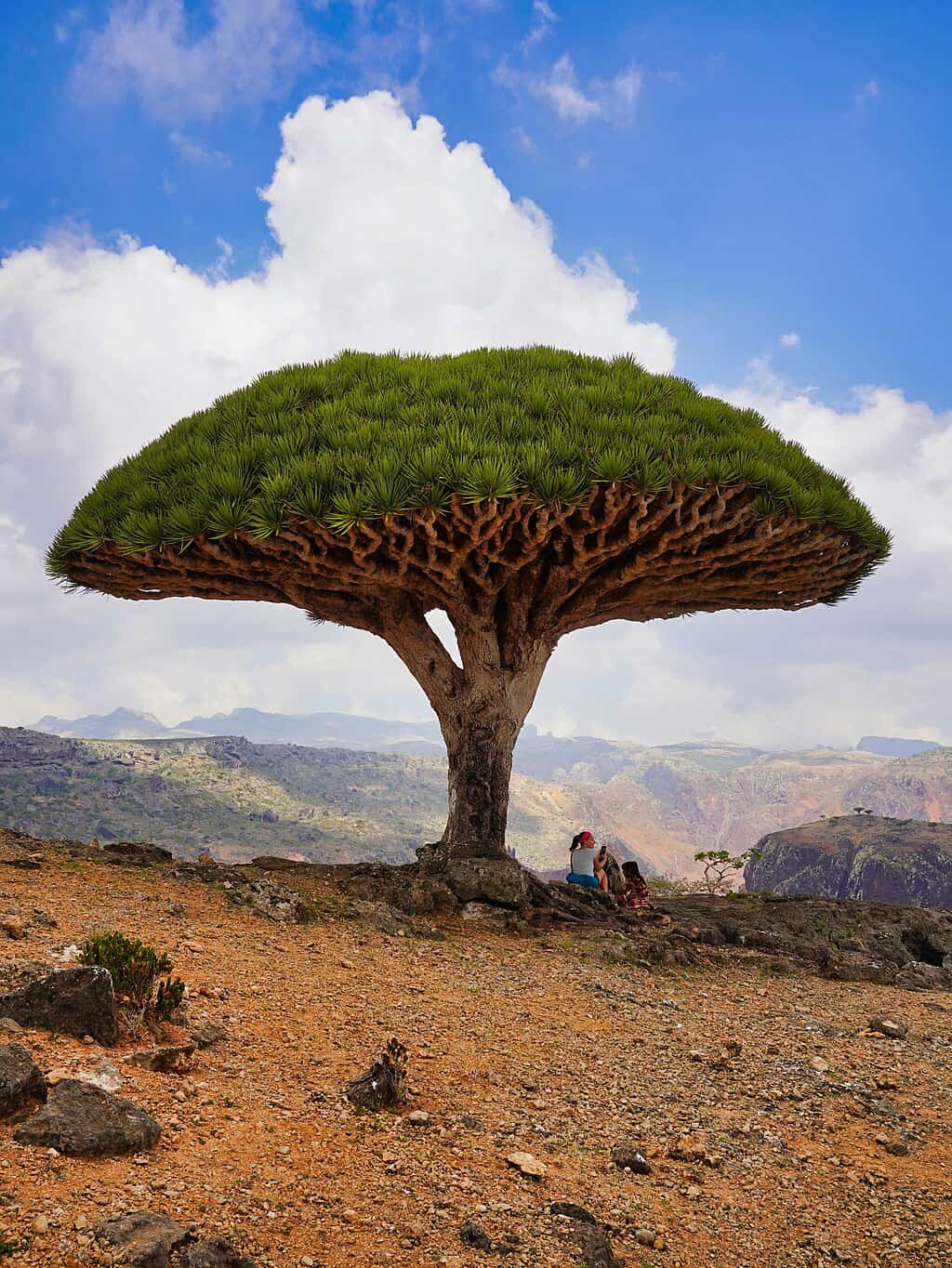
The Socotra Dragon Tree (Dracaena cinnabari), native to the Socotra archipelago in Yemen, is one of the most unique and visually striking trees in the world. Its umbrella-like shape, with dense clusters of branches that fan out at the top, makes it stand out in the arid landscape of Socotra. The tree gets its name from the dark red resin it produces, known as “dragon’s blood,” which has been used for centuries in medicine, dyes, and varnishes. Local legends tell of the tree’s origin from the blood of dragons, adding to its mystical allure. The Socotra Dragon Tree is well adapted to its harsh environment, with thick, leathery leaves that reduce water loss and a shape that helps to capture moisture from the air. The tree is endemic to Socotra, meaning it is found nowhere else on Earth, and its survival is threatened by climate change and overgrazing by livestock. The Socotra Dragon Tree’s distinctive appearance, cultural significance, and endangered status make it one of the most majestic and mysterious trees in the world.
Rainbow Eucalyptus, Southeast Asia
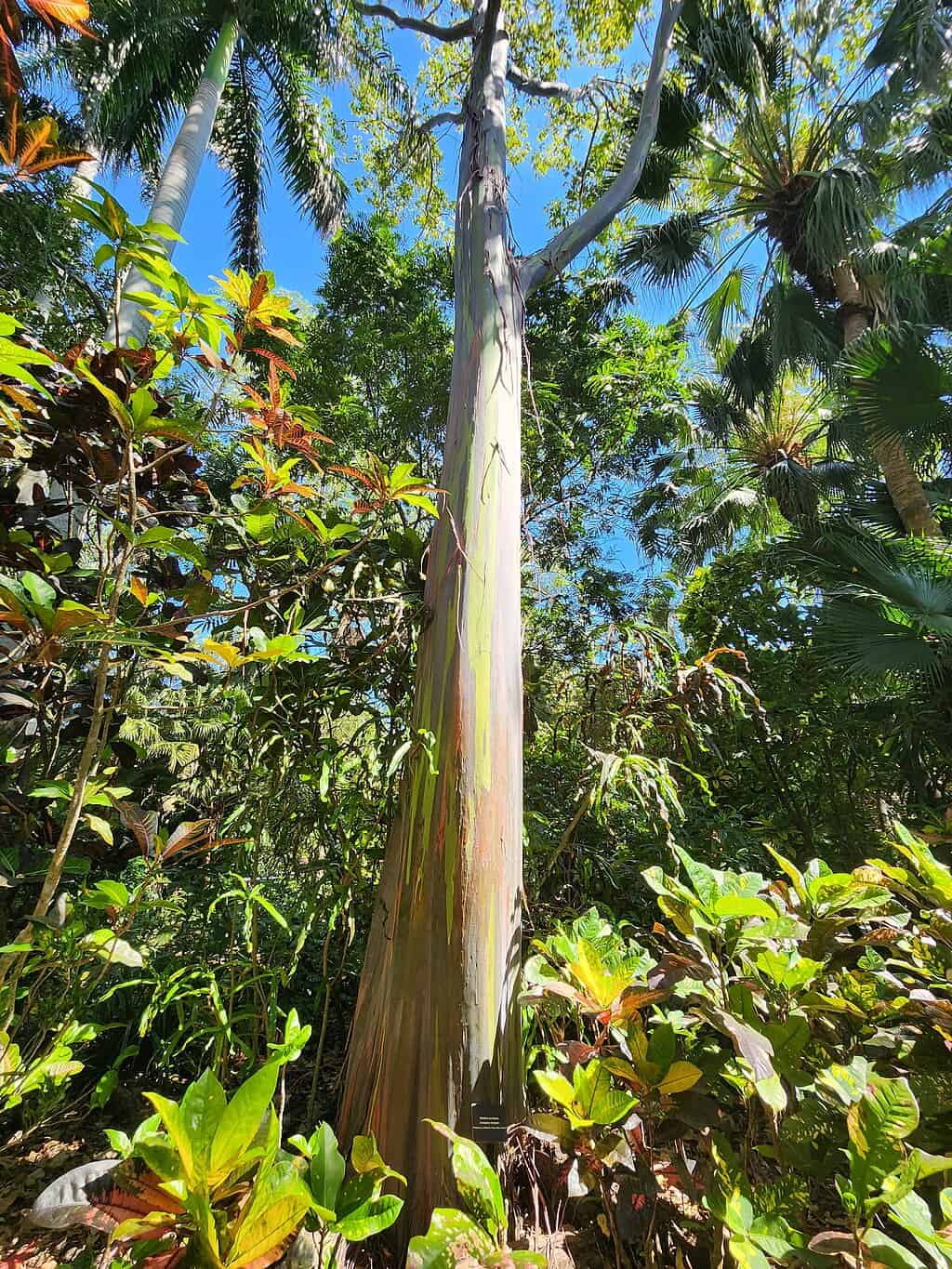
The Rainbow Eucalyptus (Eucalyptus deglupta) is one of the most colorful and visually striking trees in the world, found primarily in Southeast Asia, including the Philippines, Indonesia, and Papua New Guinea. The tree is named for its multi-colored bark, which peels away in strips to reveal a bright green inner layer that gradually changes to blue, purple, orange, and maroon as it matures. This natural display of color makes the Rainbow Eucalyptus a living work of art, attracting admirers from around the globe. The tree can grow up to 250 feet tall in its native rainforest environment, where it thrives in the humid, tropical climate. The Rainbow Eucalyptus is the only eucalyptus species found naturally in the Northern Hemisphere, and its rapid growth rate makes it a valuable source of timber and pulpwood in some regions. The tree’s vibrant colors, impressive height, and ecological importance make it one of the most majestic trees in the world, embodying the beauty and diversity of the natural world.
Angel Oak, South Carolina, USA
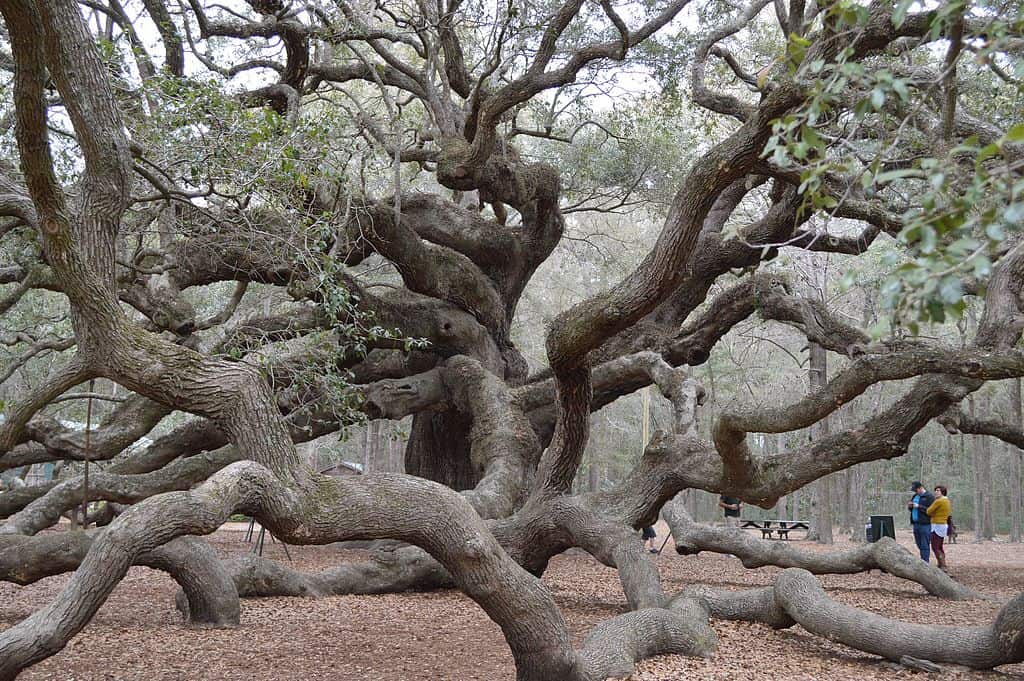
The Angel Oak is a Southern live oak (Quercus virginiana) located on Johns Island near Charleston, South Carolina. This magnificent tree is estimated to be around 400 to 500 years old, making it one of the oldest living things in the United States. The Angel Oak stands at 65 feet tall, with a canopy that provides 17,000 square feet of shade. Its longest limb stretches 89 feet, and some branches grow back into the ground, creating a maze of limbs that adds to the tree’s otherworldly appearance. The Angel Oak has become a beloved landmark in South Carolina, drawing visitors from all over the world who come to marvel at its sprawling branches and ancient trunk. The tree has withstood countless hurricanes, floods, and human encroachment, and remains a symbol of resilience and strength. Local legends and folklore surround the tree, adding to its mystique and cultural significance. The Angel Oak’s majestic size, age, and endurance make it a true natural wonder and a testament to the beauty and resilience of the natural world.
Strangler Fig at Ta Prohm, Cambodia
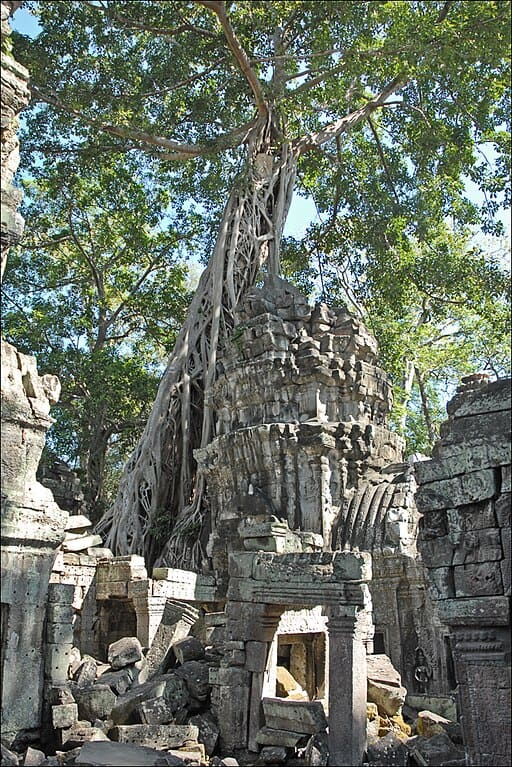
The Strangler Fig (Ficus virens) at Ta Prohm temple in Cambodia is one of the most iconic examples of nature reclaiming man-made structures. Ta Prohm, a 12th-century Buddhist temple complex, is part of the Angkor Archaeological Park, a UNESCO World Heritage site. The temple was largely left in its natural state when rediscovered in the early 20th century, allowing the jungle to envelop the ruins. The Strangler Fig has grown over and through the stone walls of the temple, its massive roots intertwining with the ancient stones, creating a breathtaking fusion of nature and architecture. The tree’s roots have both supported and destroyed the temple structures over the centuries, adding to the sense of mystery and awe that surrounds the site. The Strangler Fig at Ta Prohm has become a symbol of the power of nature and the impermanence of human creations. Its majestic presence, combined with the haunting beauty of the temple ruins, makes it one of the most photographed and admired trees in the world.
Sagano Bamboo Forest, Japan
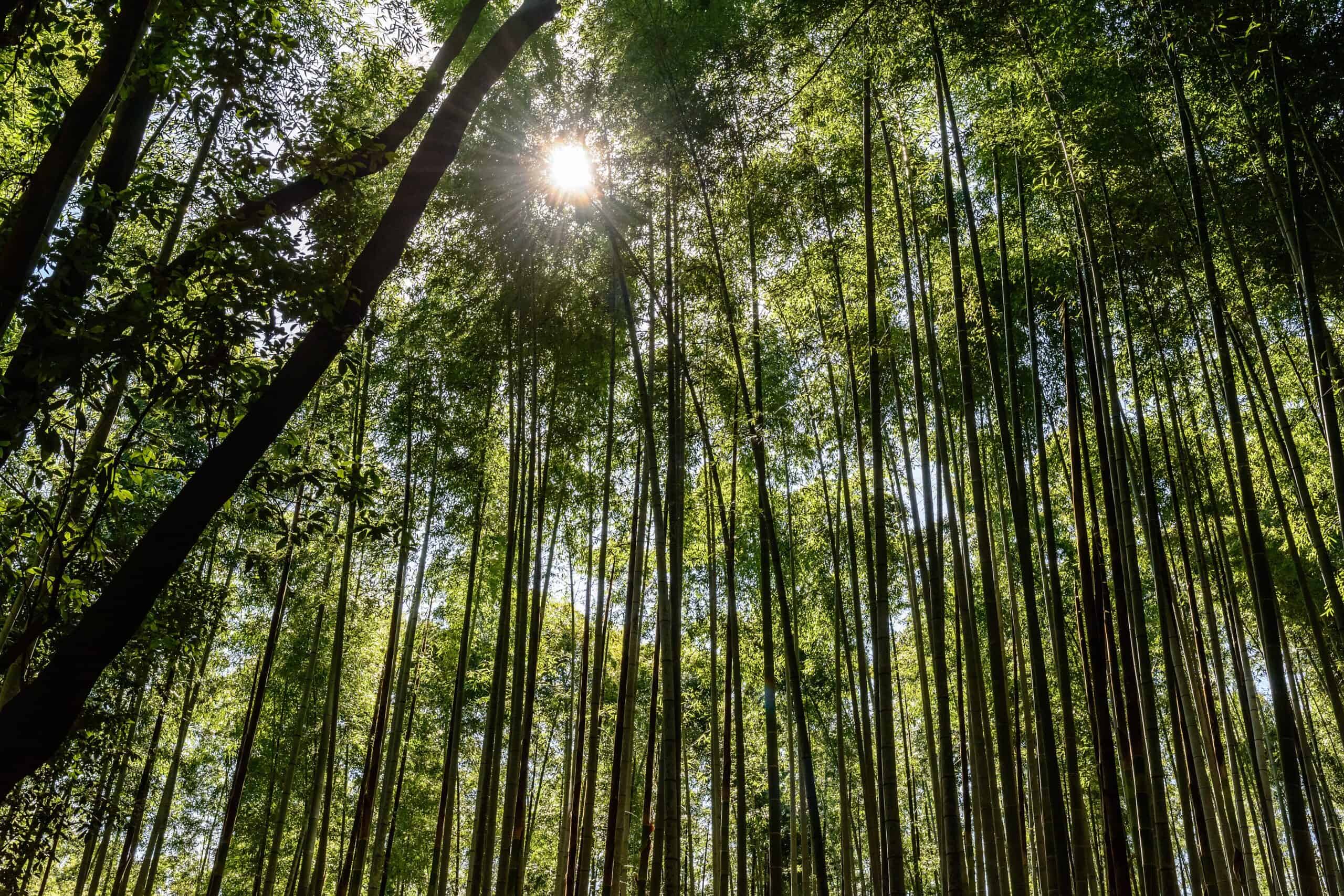
The Sagano Bamboo Forest, located in the Arashiyama district on the outskirts of Kyoto, Japan, is one of the most enchanting and serene natural sites in the world. The forest is composed of towering bamboo stalks (Phyllostachys edulis), which can reach heights of up to 70 feet. The dense bamboo creates a tunnel-like effect, with sunlight filtering through the slender trunks and casting a soft, green glow over the entire forest. The Sagano Bamboo Forest is also renowned for its unique soundscape; when the wind passes through the bamboo, it creates a gentle rustling noise that has been described as one of the most beautiful natural sounds in Japan. This sound is so cherished that it has been designated as a “soundscape of Japan” by the Japanese government. The Sagano Bamboo Forest is not only a place of natural beauty but also a site of cultural significance, often associated with tranquility, meditation, and the Japanese aesthetic of wabi-sabi. The forest’s towering bamboo, peaceful atmosphere, and cultural importance make it one of the most majestic and beloved natural sites in the world.
This article originally appeared on Rarest.org.
More from Rarest.org
16 Most Spectacular Cave Paintings from Prehistoric Times

Prehistoric cave paintings offer a captivating glimpse into the lives and minds of our ancient ancestors. Read more.
13 Most Sought-After Medicinal Plants in Herbalism

Herbalism has been a cornerstone of traditional medicine for centuries. The use of medicinal plants provides natural remedies for various ailments. Read more.
In the world of music, many influential artists often remain in the shadows, overshadowed by the more famous names they inspired. These unsung musicians have significantly shaped popular music, leaving an indelible mark on various genres. Read more.

